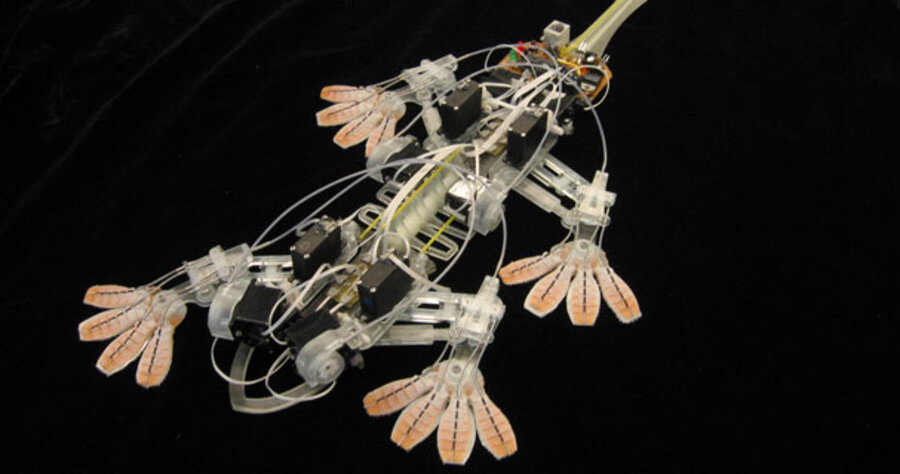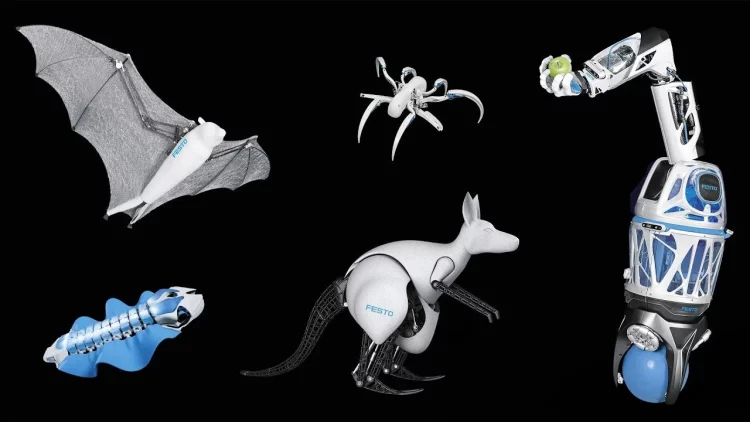Introduction: The Evolution of Biomimetic Robots in Dynamic Environments
Biomimetic robots, inspired by the principles and mechanisms found in nature, have shown remarkable promise in adapting to dynamic environments. Nature’s organisms exhibit impressive behaviors—such as the ability to adjust movement patterns in response to environmental changes, self-repair systems, and efficient energy use—which are now being replicated in robotic designs. This adaptive capability allows biomimetic robots to autonomously adjust their behaviors based on the specific conditions of their surroundings.
From self-learning algorithms to multi-sensory feedback systems, the key strength of these robots lies in their ability to operate independently and adapt autonomously without human intervention. Their environmental responsiveness makes them invaluable in areas ranging from disaster response to space exploration, where conditions change unpredictably and require dynamic adjustments.
In this article, we will explore how biomimetic robots leverage adaptive technologies to adjust their behavior in response to environmental changes. We will delve into their underlying mechanisms, technological advancements, and practical applications, highlighting how their autonomous behavior makes them increasingly indispensable across various industries and environments.
1. The Core Concept of Biomimetic Robotics
Biomimetic robots, also known as bio-inspired robots, are designed to replicate the characteristics and behaviors of animals, plants, and even microorganisms. These robots are developed to mimic nature’s efficiency in terms of mobility, perception, energy use, and adaptation to different environmental conditions.
In the natural world, living organisms have evolved complex systems that allow them to sense changes in their environment and adjust their behaviors accordingly. Biomimetic robots strive to replicate this adaptive behavior, making them highly suited for complex, unpredictable, or dangerous environments.
1.1. Key Characteristics of Biomimetic Robots
- Autonomous adaptation: Robots can adjust their actions based on sensory input from the environment.
- Environmental sensing: Equipped with advanced sensors, these robots can detect changes in temperature, humidity, light, pressure, or obstacles, adjusting their movements and tasks accordingly.
- Learning and self-improvement: Using algorithms like reinforcement learning or deep learning, these robots can learn from past experiences, optimizing their behaviors over time.
- Energy efficiency: Just as animals conserve energy by adapting their movements or behaviors, robots can optimize their energy consumption to adapt to changing conditions.
2. Autonomous Adaptation: Mimicking Nature’s Flexibility
Nature’s organisms exhibit a high degree of adaptive flexibility—an ability to modify their behavior based on immediate environmental conditions. For instance, birds may alter their flight patterns when encountering wind resistance, and chameleons adjust their skin color to regulate temperature and camouflage.
In robotics, autonomous adaptation refers to a robot’s ability to adjust its actions, trajectory, or strategy based on sensory feedback from the environment. These robots are designed with adaptive control systems and sophisticated algorithms that allow them to autonomously change their behavior.
2.1. Environmental Sensing Mechanisms
Biomimetic robots use a combination of sensors to perceive and adapt to environmental changes. These sensors are inspired by biological counterparts such as vision, hearing, and touch. Some of the key sensing systems include:
- Vision Systems: These systems are inspired by the eyes of animals like insects or humans. Cameras and depth sensors allow robots to perceive their environment, detect obstacles, and even recognize objects.
- Proximity Sensors: Using infrared or ultrasonic sensors, robots can detect the presence of nearby objects or changes in the immediate environment.
- Temperature and Pressure Sensors: Robots can measure variations in temperature or pressure, helping them make decisions, such as changing their mode of movement in extreme conditions, much like how animals adjust to weather changes.
- Tactile Sensors: These sensors, inspired by the sense of touch in animals, help robots feel physical interactions with the environment, enabling them to handle delicate objects or navigate through tight spaces.
2.2. Adaptation Algorithms
At the core of a biomimetic robot’s ability to adapt is its algorithmic decision-making system. These robots leverage adaptive control algorithms, which use real-time data from the sensors to adjust their behavior. Some of the most prominent algorithms include:
- Reinforcement Learning (RL): In RL, robots explore their environment and learn optimal strategies by receiving feedback, either as a reward or punishment, for certain actions. This is akin to how animals learn to avoid predators or find food sources.
- Deep Learning: This method mimics the human brain’s ability to recognize patterns and adjust decisions based on past experiences, making it ideal for tasks like object recognition or adaptive behavior in complex environments.
- Swarm Intelligence: Borrowing from the behavior of social animals such as ants, bees, or birds, robots can work together autonomously, adjusting their actions based on the behavior of other robots in the swarm.
These algorithms enable biomimetic robots to make intelligent decisions without the need for direct human input, allowing them to learn from their experiences and adjust their actions accordingly.

3. Applications of Autonomous Adaptation in Biomimetic Robots
Biomimetic robots’ ability to autonomously adapt to changing environments makes them invaluable in a variety of real-world applications. Below are some of the key areas where these robots are having a profound impact.
3.1. Disaster Response and Search and Rescue
During natural disasters like earthquakes, floods, or fires, environments can change rapidly, presenting significant challenges for human rescuers. Biomimetic robots can autonomously adapt their behavior to navigate unstable terrain, avoid obstacles, and locate survivors.
For example, swarm robots can be deployed in disaster zones, working together to map out collapsed buildings, detect gas leaks, and deliver medical supplies. These robots often use adaptive locomotion, inspired by animals like snakes and caterpillars, to maneuver through rubble and tight spaces.
Additionally, flying robots with advanced vision and object recognition systems can adapt their flight paths based on environmental factors like wind or obstacles, allowing them to navigate difficult terrain, such as collapsed structures or mountainous areas.
3.2. Autonomous Vehicles and Robotics in Agriculture
In agriculture, robots are being designed to adapt autonomously to changing crop conditions. These robots can monitor soil moisture, detect pests, and adjust their movement based on the location of crops. Autonomous farm robots can adapt to varying crop heights, uneven terrain, and changing weather conditions, ensuring that their tasks—such as harvesting or planting—are carried out with precision.
In autonomous vehicles, robots can adjust their driving behavior based on real-time environmental inputs, such as road conditions, obstacles, and weather, ensuring safe and efficient navigation. The adaptive behavior of these vehicles mimics the decision-making processes of humans and animals when navigating complex environments.
3.3. Exploration of Extreme Environments
Biomimetic robots are also being developed for extreme environment exploration, including space and deep-sea exploration. The ability of robots to autonomously adapt to temperature changes, low gravity, and unpredictable terrain makes them ideal candidates for exploring planets, moons, and even asteroids.
For instance, robots inspired by the octopus or spider can maneuver in tight spaces and adapt their body shapes to different environments. These robots can autonomously adjust their behavior to handle unpredictable environments such as the shifting surfaces of planets or fluctuating pressures in deep-sea regions.
3.4. Healthcare Robotics
In healthcare, biomimetic robots can be used for surgeries or rehabilitation. These robots can adapt their movements based on patient feedback or environmental factors like muscle resistance. Inspired by the delicate movements of human hands or the precision of bird flight, medical robots can adjust their force and direction in real-time, ensuring minimal harm to sensitive tissues during surgeries.
Additionally, robotic prosthetics are being developed to autonomously adjust to the user’s movements, providing a more natural experience for individuals with mobility impairments.
4. Challenges in Autonomous Adaptation of Biomimetic Robots
Despite the promising applications of biomimetic robots, there are several challenges in ensuring their reliable adaptation in dynamic environments.
4.1. Energy Efficiency
Autonomous adaptation requires continuous data processing and sensor feedback, which can be energy-intensive. Ensuring that robots can adapt while maintaining sufficient power levels remains a key challenge. Research into more efficient power systems and energy-harvesting technologies is critical to improving the operational duration of these robots.
4.2. Real-time Data Processing
To adapt quickly, robots need to process large amounts of sensory data in real time. Achieving low-latency processing without sacrificing accuracy is a complex challenge, especially in environments with limited computing power or connectivity.
4.3. Robustness in Unpredictable Environments
Biomimetic robots must be able to handle highly unpredictable environments. This requires building systems that can deal with sensor failure, unexpected terrain, and environmental obstacles without compromising their overall functionality.
Conclusion: The Future of Autonomous Biomimetic Robots
The field of biomimetic robotics is rapidly evolving, offering the potential to revolutionize how robots interact with and adapt to their environments. With advancements in artificial intelligence, machine learning, and sensor technologies, these robots are becoming increasingly capable of autonomous decision-making and behavior adjustment.
As biomimetic robots continue to improve, their applications will grow across industries, from disaster response to space exploration, healthcare, and agriculture. With their autonomous adaptability, these robots will not only enhance human capabilities but also enable us to tackle challenges in environments that were previously too dangerous or inaccessible for humans.
Ultimately, biomimetic robots embody the future of autonomous, adaptive technologies that can seamlessly integrate into real-world applications, demonstrating the incredible potential of learning from nature to build more intelligent and resilient machines.











































